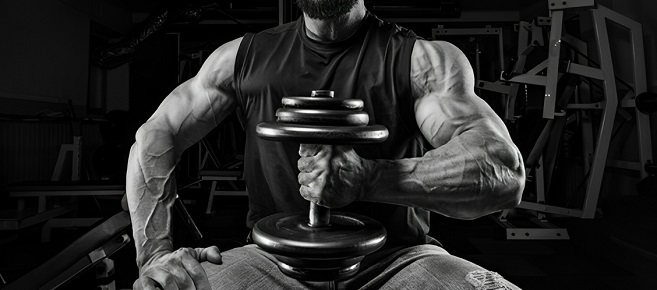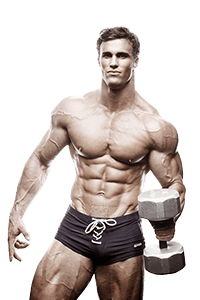Androgen Receptors And Muscle Growth
Androgen Receptors And Muscle Growth

For decades, medical practitioners across the world have appreciated the association between androgen receptors and muscle growth.
It is worthwhile to note that androgen signaling through the androgen receptor is crucial in the maintenance and development of secondary sexual organs, bone, and muscle. In fact, androgens are known to have a significant and positive anabolic effect in muscle, increasing both muscle strength and mass. Androgen receptors are crucial for muscle growth. Moreover, androgens have the unique ability of inducing hypertrophy in type 1 as well as type 2 muscle fibers, with concomitant improvements in terms of myonuclear accretion and satellite cell number.
In addition to these advantages, androgens are known for promoting the differentiation of mesenchymal multipotent cells into the myogenic lineage while facilitating the inhibition of adipogenesis. All in all, androgens are known to play a vital role in the activation & differentiation of muscle precursor cells.
Androgens represent a class of steroid hormones, acting as the connecting pieces, also known as ligands, for the androgen receptor (AR). Testosterone, the main hormone responsible for male sexual characteristics, is predominantly created in the testicles. Despite being a key player, its ability to bind, or its ligand activity, with the androgen receptor is considered relatively mild. Testosterone undergoes a transformation under the influence of an enzyme called 5α-reductase, becoming 5α-dihydrotestosterone (5α-DHT). This converted form is thought to be more effective at interacting with the androgen receptor compared to its original form, testosterone. Despite DHT's increased potency, its creation is largely limited to specific areas like the liver, skin, and reproductive organs, making testosterone the principal androgen that circulates throughout the body.
When an androgen binds to the androgen receptor, it triggers the receptor's relocation into the cell nucleus. There, the now ligand-attached androgen receptor forms a complex with other proteins called transcriptional coregulators. Together, they control the transcription, or copying, of specific target genes. The androgen receptor can be found in various tissues where it plays key roles in bodily functions. One area where it is particularly influential, and thus worth noting, is within our skeletal muscles - a prime target for androgens. Supraphysiological dosing of androgens enhance muscle strength and mass.
The tightening or contracting of skeletal muscles is made possible through the coordinated efforts of proteins within tiny units called sarcomeres. During a muscle's rest period, a team of proteins known as the troponin complex - made up of troponin T, troponin C (TNNC), and troponin I - puts a halt on the activity of an enzyme called myosin heavy chain (MyHC) ATPase. When a motoneuron fires, it triggers the release of calcium ions (Ca2+) from an area within muscle fibers called the sarcoplasmic reticulum. These freed calcium ions then latch onto TNNC. This connection sets off a reshaping process that paves the way for MyHC ATPase to function as a sort of motor protein.
What Is Androgen Receptor?
Androgen Receptor can be defined as an important member of the steroid receptor superfamily of transcription factor that gets activated by binding of the steroid ligands 5α-dihydrotestosterone (DHT) or testosterone. Upon binding of the ligand(s), androgen receptor translocates to the nucleus and binds as a dimer to androgen receptor elements that are located within the DNA for the purpose of regulating transcription.
Androgen Receptor also helps in regulating the expression of small, single-stranded, non-coding RNA molecules known as miRNAs (miR206, miR133b, miR221, and miR222). miR206 is known to be highly expressive when it comes to the differentiation of muscle cells and promotes partial differentiation by minimizing expression of PolA1, which is a DNA pol α-subunit vital for DNA synthesis and cell proliferation. Therefore, the up-regulation of miR206 expression is a contributing factor to the AR-dependent improvement in myoblast differentiation after being stimulated with androgens. In contrast, miR133 promotes myoblast proliferation by repressing expression of Serum response factor (SRF), which is a transcriptional regulator vital for differentiation. miRNAs such as miR221 and miR222 help in the promotion of myoblast proliferation as well as cell cycle progression in part by targeting the cell cycle inhibitors p27 and p57.
Over years, a decline in AR and testosterone can result in the loss of muscle function and mass, aging, and immobilization following acute injuries. In humans, aging is associated with sarcopenia or a huge reduction in skeletal muscle mass. This health condition is associated with frailty, depression, and significant reductions in the quality of life, especially in older adults. Testosterone, the primary male sex hormone, also reduces with age. It is worthwhile to note here that testosterone plays a crucial role in an increase in terms of androgen receptor content, thereby improving skeletal muscle growth.
Myocytic androgen receptor controls the expression of androgen-induced insulin-like growth factor IEa (IGF-IEa) in the highly androgen-sensitive perineal muscles. It also mediates androgen-stimulated postnatal hypertrophy of these muscles. Similarly, androgen-dependent postnatal hypertrophy of limb muscle fibers is found to be independent of myocytic androgen receptor. Therefore, androgens control perineal and limb muscle mass via myocytic AR-dependent and -independent pathways, respectively. Myocytic androgen receptor is vital for generating maximum force of fast- and intermediary-twitch leg muscles by controlling myofibrillar organization of androgen-induced hypertrophic myofibers. A deficiency of androgen receptor in limb myocytes reduces muscle strength and impairs myofibrillar organization of sarcomeres to highlight the fact that myocytic AR tends to have a controlling effect on the key pathways required for maximum force production.
We hope that this informative piece of information helped you gain invaluable insights about the prominent association between androgen receptors and muscle growth.






